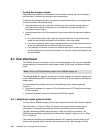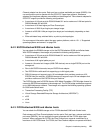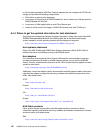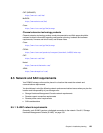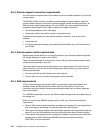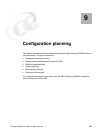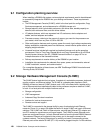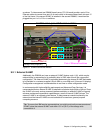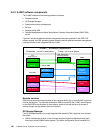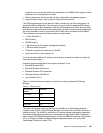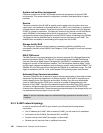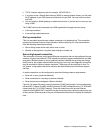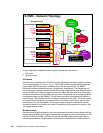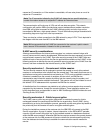158 DS8000 Series: Concepts and Architecture
9.1 Configuration planning overview
When installing a DS8000 disk system, various physical requirements need to be addressed
to successfully integrate the DS8000 into your existing environment. These requirements
include:
The DS Management Console (S-HMC), which is the focal point for configuration, Copy
Services management, and maintenance for a DS8000 storage unit.
Storage features, which include disk enclosures, disk drives sets, standby capacity on
demand, disk enclosure fillers, and disk drives cables.
I/O adapter features, which are separated into I/O enclosures, device adapters and
cables, and host adapters and cables.
Processor memory, referring to the amount of memory you want for the processors on
your model, which can vary from 16 GB to 256 GB.
Other configuration features such as power, power line cords, input voltage requirements,
battery assemblies, extended power line disturbance, remote zSeries power control, and
shipping weight reduction.
Licensed functions include both required and optional features such as the operating
environment, Point-in-Time Copy, Remote Mirror and Copy, Remote Mirror for z/OS and
Parallel Access Volumes. See 9.3, “DS8000 licensed functions” on page 167 for an
in-depth discussion of the licensed functions.
Delivery requirements to receive delivery of the DS8000 at your location.
Installation site requirements for adequate floor space, power, environmentals, external
S-HMC installation, network, and communication.
For a complete discussion of these issues, see
IBM TotalStorage DS8000 Introduction and
Planning Guide,
GC35-0495.
9.2 Storage Hardware Management Console (S-HMC)
The S-HMC feature looks similar to a laptop. It consists of a workstation processor, keyboard,
monitor, modem, and Ethernet cables. The S-HMC is a closed system appliance. Each
DS8000 will have an internal S-HMC (feature code 1100) in the base frame, together with a
pair of Ethernet switches installed and cabled to the processor complex or external S-HMC,
or both. It is a focal point with multiple functions such as:
Storage configuration
LPAR management
Advanced Copy Services invocations
Interface for local service personnel
Remote service and support
The S-HMC is connected to the storage facility by way of redundant private Ethernet
networks. Figure 9-1 on page 159 shows the back of a single S-HMC and a pair of Ethernet
switches. The S-HMC has 2 built-in Ethernet ports, one dual-port Ethernet PCI adapter and
one PCI modem for asynchronous call home support. The S-HMC’s private Ethernet ports
shown are configured into port 1 of each Ethernet switch to form the private DS8000 network.
The customer Ethernet port indicated is the primary port to be used to connect to the
customer network. The empty Ethernet port is normally not used. Corresponding private
Ethernet ports of the external S-HMC (FC1110) would be plugged into port 2 of the switches



